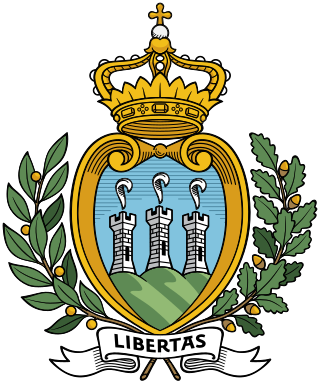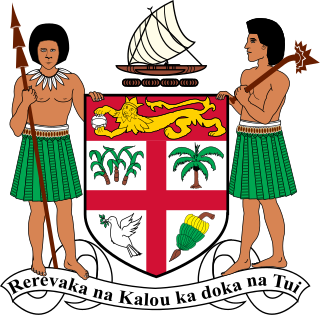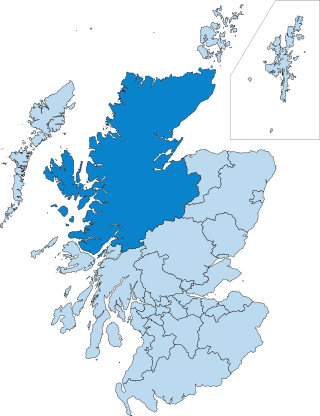
The politics of the state of San Marino take place in a framework of a unitary assembly-independent representative democratic republic, whereby the Captains Regent are the heads of state and heads of government. The country has a multi-party system. Executive power is exercised by the government. Legislative power is vested in both the government and the Grand and General Council. The judiciary is independent of the executive and the legislature.

Since becoming independent of the United Kingdom in 1970, Fiji has had four constitutions, and the voting system has changed accordingly.

The Sammarinese Communist Party was a Marxist political party in the small European republic of San Marino. It was founded in 1921 as a section of the Communist Party of Italy (PCI). The organization existed for its first two decades as an underground political organization.

San Marino elects on the national level a legislature. The Grand and General Council has 60 members, elected for a five-year term by semi-proportional representation with national majority bonus.

The Grand and General Council is the parliament of San Marino. The council has 60 members elected for a five-year term.

The politics of the Highland council area in Scotland are evident in the deliberations and decisions of the Highland Council, in elections to the council, and in elections to the House of Commons of the Parliament of the United Kingdom (Westminster) and the Scottish Parliament (Holyrood). In the European Parliament the area was within the Scotland constituency, which covers all of the 32 council areas of Scotland.
The Arengo was the name of the assembly that ruled San Marino from the fifth century A.D. to 1243, and of the popular councils which regulated the political life in Northern Italy free comuni in the Middle Ages as well. It was made up of the heads of San Marino's Great families and had no leader or fixed meeting place. This made San Marino almost unique in the period as a state that had no Head of State. However this form of rule was cumbersome and the Arengo was crippled by feuds between the Great Families. By the early 13th century the Arengo had become so dysfunctional that the citizens of San Marino decided to elect their own assembly, which they called the Grand and General Council. This assembly became very powerful, and by 1243 the Pope, who was the nominal ruler of San Marino, made the Grand and General Council the supreme body of San Marino.

The fatti di Rovereta was a constitutional crisis in San Marino in 1957 in which the Grand and General Council was deliberately rendered inquorate to prevent the scheduled election of Captains-Regent. A provisional government was established in the village of Rovereta, in opposition to the outgoing Captains-Regent whose term had expired.

General elections were held in San Marino on 10 June 1906.

General elections were held in San Marino on 23 June 1912 to elect the third term of the Grand and General Council.

General elections were held in San Marino on 13 June 1915 to elect the fourth term of the Grand and General Council.

General elections were held in San Marino on 9 June 1918 to elect the fifth term of the Grand and General Council.

General elections were held in San Marino on 14 November 1920 to elect the sixth term of the Grand and General Council. It was the country's first snap election, and the first election to use a form of proportional representation. The result was a victory for the Sammarinese People's Party, which won 29 of the 60 seats.

General elections were held in San Marino on 4 March 1923 to elect the seventh term of the Grand and General Council. It was a snap election that marked the beginning of fascist rule in the republic. Left-wing parties were prevented from participating, while all centre-right forces ran as a single "Patriotic Bloc". Of the 60 seats, 29 were taken by the Sammarinese Fascist Party, 20 by the Sammarinese People's Party, 9 by the Sammarinese Democratic Union and two by the Fascist-puppets Volunteers of War. Later the country was taken over by the Fascist Party.

General elections were held in San Marino on 12 December 1926 to elect the eighth term of the Grand and General Council. It was a sham election, all opposition being prevented to participate by internal and Italian threats. After it had taken over the country in April 1923, the Sammarinese Fascist Party was the only party to contest the elections, winning all 60 seats, while the official report spoke of a sole dissident ballot. A new electoral law guaranteed safe undisputed seats to the two incumbent Captains Regents.

The 1906 San Marino citizenry meeting was a session of the Arengo in San Marino. It was the first such meeting in three centuries. It ended oligarchic rule and resulted in the first modern democratic elections in the country.
General elections were held in San Marino on 11 November 2012. The 60 seats in the Grand and General Council were up for grabs. The elections were held using the majority bonus system. The previous election, held in 2008, provided the Sammarinese Christian Democratic Party with the largest single parliamentary group. The Party of Socialists and Democrats, although winning more votes than the former, became the main opposition party.
The electoral system of Turkey varies for general, presidential and local elections that take place in Turkey every five years. Turkey has been a multi-party democracy since 1950, with the first democratic election held on 14 May 1950 leading to the end of the single-party rule established in 1923. The current electoral system for electing Members of Parliament to the Grand National Assembly has a 7% election threshold.

Elections to Staffordshire County Council took place on 6 May 2021 on the same day as district council elections in Cannock Chase and Tamworth and other local elections in England. All of the council's divisions were up for election, meaning a total of 62 councillors were elected.
The 2020 San Marino local elections were held on 29 November, to elect the mayors and the councils of the 9 municipalities of San Marino. These elections were initially scheduled to take place on 15 December 2019, but were postponed to 21 June 2020 due to a snap general election called for 8 December. Due to the COVID-19 pandemic, elections were postponed once again to 29 November 2020.







